
Beckenham is a town in Greater London, England, within the London Borough of Bromley. Prior to 1965, it was part of Kent. It is situated north of Elmers End and Eden Park, east of Penge, south of Lower Sydenham and Bellingham, and west of Bromley and Shortlands, and 8.4 miles (13.5 km) south-east of Charing Cross. Its population at the 2011 Census was 46,844.
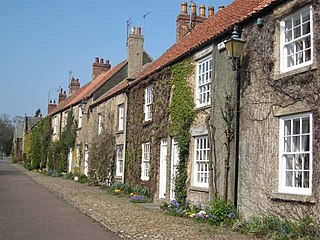
Brancepeth is a village and civil parish in County Durham, in England. It is situated about 8 km (5 mi) from Durham on the A690 road between Durham and Weardale. The population of the civil parish taken at the 2011 census was 414.

Cockerton is an area in the north-west of Darlington in the borough of Darlington, County Durham, England. The Cocker Beck flows through the area and empties into the River Skerne via The Denes, an area and string of valleyed parks donated for the town in the early 20th century. It is also near Mowden, Branksome, West Park and Faverdale.

Horden is a village and electoral ward in County Durham, England. It is situated on the North Sea coast, to the east of Peterlee, approximately 12 miles south of Sunderland. Horden was a mining village until the closure of the Horden Colliery in 1987. Main features include the Welfare and Memorial Parks and St Mary's church. It is connected to the villages of Blackhall Colliery and Blackhall Rocks to its south by a spectacular rail viaduct which spans Castle Eden Dene near Denemouth. Horden Dene provides Horden's northern boundary with Easington Colliery.

Egglescliffe is a village and civil parish in County Durham, England. Administratively it is located in the borough of Stockton-on-Tees.

Eggleston is a village in County Durham, in England. The population of the civil parish taken at the 2011 Census was 448. It is in the Teesdale, a few miles north-west of Barnard Castle.
Monk Hesleden is a village and civil parish in County Durham, England. The population of the parish at the 2011 Census was 5,722. The parish is situated to the north-west of Hartlepool, and is on the North Sea coast. Monk Hesleden village is situated a short distance to the south of High Hesleden.

Abercorn is a village and civil parish in West Lothian, Scotland. Close to the south coast of the Firth of Forth, the village is around 5 km (3.1 mi) west of South Queensferry. The parish had a population of 458 at the 2011 Census.

Gogar is a predominantly rural area of Edinburgh, Scotland, located to the west of the city. It is not far from Gogarloch, Edinburgh Park and Maybury. The Fife Circle Line is to the north.
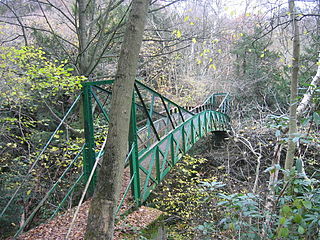
Castle Eden Dene is a Site of Special Scientific Interest and National Nature Reserve in the Easington district of County Durham, England. It is located mostly in Peterlee, between the A19 and A1086 roads.

Leafield is a village and civil parish about 4 miles (6.4 km) northwest of Witney in West Oxfordshire, England. The parish includes the hamlet of Langley, 1 mile (1.6 km) west of Leafield village. The 2011 Census recorded the parish's population as 945. The village is 635 feet (194 m) above sea level in the Cotswold Hills. It was the highest point in Oxfordshire until the 1974 county boundary changes enlarged the county.
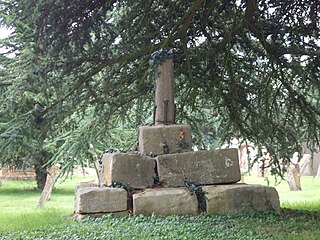
Edenham is a village and civil parish in the South Kesteven district of Lincolnshire, England. It is approximately 3 miles (5 km) north-west of Bourne, and on the A151 road. While the civil parish is called 'Edenham', the parish council is called Edenham, Grimsthorpe, Elsthorpe & Scottlethorpe Parish Council. The population of the civil parish at the 2011 census was 291.
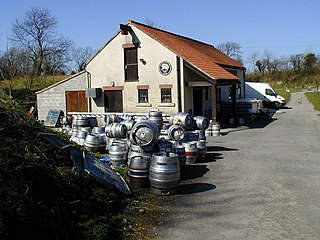
Cropton is a village and civil parish in the Ryedale district of North Yorkshire, England. It is on the border of the North York Moors National Park, 3 miles (5 km) north-west of Pickering.

Crichton is a small village and civil parish in Midlothian, Scotland, around 2 miles (3 km) south of Pathhead and the same distance east of Gorebridge.

Edenhall is a clustered village and former civil parish, now in the south-west of the parish of Langwathby, 800m to the north in the Westmorland and Furness district, in Cumbria, England. Edenhall has a church called St Cuthbert's Church. The name Edenhall originates from Eden Hall house, the seat of the Musgrave family of Hartley Castle, Cumberland many of whom were members of the House of Commons. In 1931 the civil parish had a population of 216. On 1 April 1934 the civil parish was merged into Langwathby.
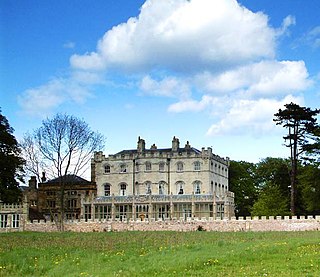
The Castle at Castle Eden, County Durham, England, is an 18th-century, Palladian style, mansion house and a Grade II* listed building. No trace remains of the medieval castle of Robert the Bruce.
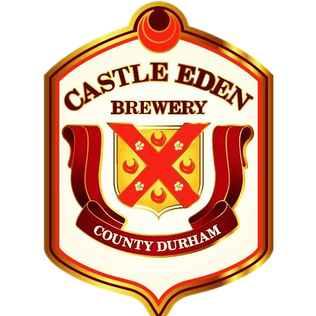
Castle Eden Brewery was a brewery that operated in the village of Castle Eden in County Durham. It was best known for Castle Eden Ale, which continues to be produced at Seaham.

Rowland Burdon was an English landowner and Tory politician from Castle Eden in County Durham.
Katharine Alice Salvin Tristram was a missionary and teacher in Japan with the Church Missionary Society. She was also the first resident lecturer at Westfield College and one of the first women to gain a degree from the University of London. She was the first woman missionary with the Church Missionary Society to have a degree.


















